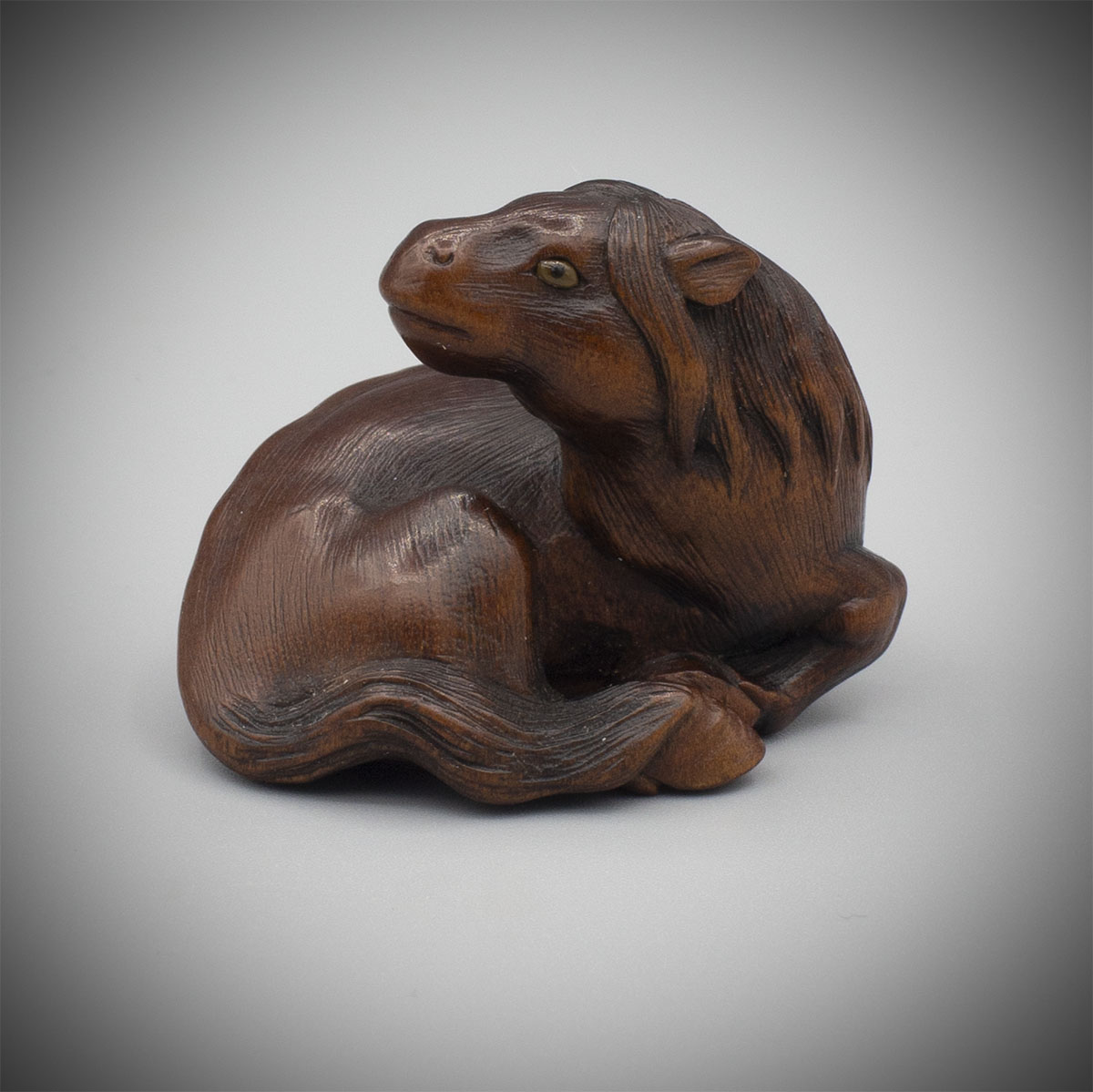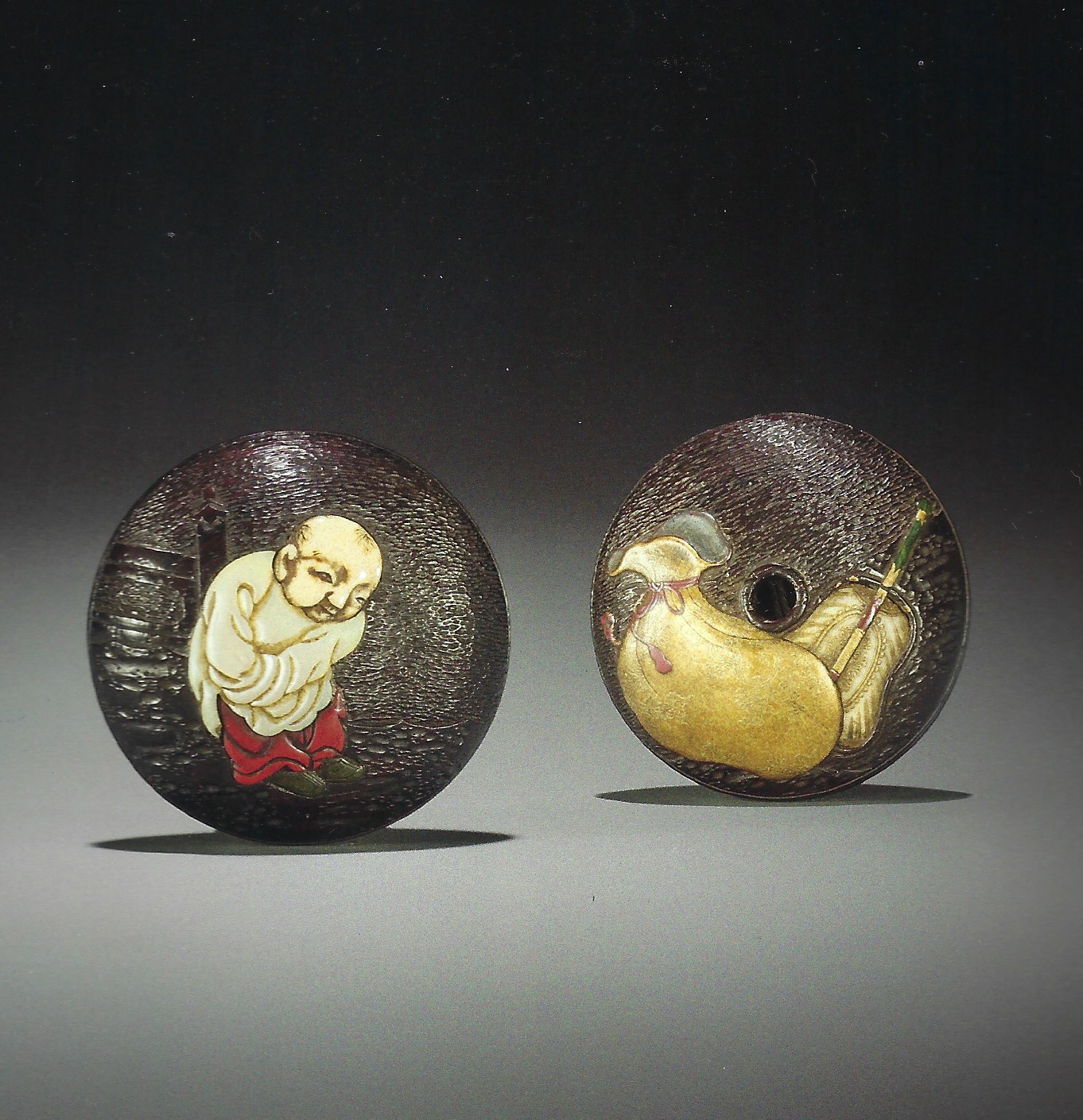10 Common Myths About Netsuke Collecting
What Are Netsuke?
Netsuke are small, sometimes intricate, carvings made predominantly from wood, ivory, stag antler and some other materials, used since the early 17th century to allow pouches and containers to be hung from the belt (“obi”) of a Japanese kimono. From the opening of Japan to the West in the second half of the 19th century, these diminutive sculptural works have captured the imagination of collectors worldwide, and have not lost their appeal, especially outside the country. Partly due to a lack of detailed literature in the early phases of foreign appreciation, a number of myths and misconceptions gained widespread currency. In this article, we seek to debunk 10 of them.
-
Are all Netsuke Japanese?
While netsuke are a Japanese art form, there were Chinese precedents, known in English as toggles. Typical of so many adoptions by the Japanese, they succeeded in emulating (in the true sense of the word) what it was that they were imitating. The foreign popularity of netsuke has also spawned mass production for the export of poor imitations, not only in Japan but also in China and other unidentified East Asian countries. Beginner collectors are often duped into thinking that these are older, and some of them never learn to distinguish between the old and the new.
-
Netsuke are Strictly Functional
Although netsuke were conceived with the utilitarian function described above, they evolved in time into a sophisticated art form, displaying high technical virtuosity and originality of design, often combined with narrative skill, more or less overt cultural allusions and sometimes humour. It is these aspects which appeal to devotees.

-
Are Ivory Netsuke Illegal?
Until the 1970s there were few restrictions on the movement of ivory internationally. In 1973 a large group of countries signed the so-called CITES convention agreement, which included measures to try to stem an international demand for raw, usually poached, elephant ivory. Under the rules of the Convention it was still possible to move objects worked in ivory, as long as they had been carved before 1947, and were subject to obtaining export and corresponding import licenses. More recently the United States stopped granting import licenses for objects carved in African elephant ivory. Given the difficulties of accurately recognising the differences between African and Asian ivory on the basis of visual inspection alone, this all but closed the US import market, and export also ceased. Internally a few states decided to ban all sales of elephant ivory of any date or origin, as well as its movement across state lines. Outside those states, there is still a legal market within the USA. Separately the United Kingdom, under a Conservative government, decided on a more draconian course, and as of June 2022 it is illegal to sell (but not own) ivory of any date, worked or not. Meanwhile, the European Union was considering the matter and with no warning introduced controlling measures in January 2022. As of that date, it is no longer permissible to move ivory across the outer borders of the Union. A European internal market remains, but for pre-1947 objects only, and for those an official certificate is required. In order to obtain one, it is normally necessary to have documentary proof of acquisition and of the object being in the EU before January 19th 2022. There are no doubt rules governing the sale of ivory in other countries, but it would be too complicated to go into them all here. Suffice to say that, as written above, there remains something of an internal market for old elephant ivory in the US and EU.
-
Netsuke are Always Expensive
While it is true that some netsuke can fetch astronomical prices at auction, notably a world record price of US$441,375 for a wood netsuke in December 2022, there are still affordable options for collectors across a wide range of prices. There is no reason why one should not be able to buy a 19th-century or even 18th century for well under 1000 dollars, euros or pounds, or even half that sum.
-
Size Determines Value
Though some may assume that larger netsuke are more valuable, size is not the primary factor in determining a piece's worth. Rarity, craftsmanship, materials, and the artist's reputation are more critical in determining a netsuke's value.
-
Only Traditional Subjects are Collectible
While many netsuke represent stock subjects such as animals, characters from myth and folklore, and scenes from daily life, contemporary artists have also embraced the art form. When it comes to modern netsuke there is no limit to the subject matter, which can range from abstract design to something as unconventional as a Coca-Cola can. It is the prerogative of the individual collector to decide what takes his or her fancy.
-
Netsuke Must Be Signed to Be Valuable
Signatures are a ticklish subject. Many old netsuke were not signed by the carver at the time they were made, sometimes for reasons of Japanese social etiquette. It often happened that in the late 19th century, the time of the greatest export of netsuke from the country, many unsigned netsuke received an added signature to pander to Western demand. There are also many instances of late 18th-century netsuke receiving what is essentially a fake signature at the time they were carved. This was often the case when an apprentice was not permitted to use his own name, and applied that of his master. As early as 1781 it was written that netsuke of oxen not by Tomotada were circulating with the master’s signature. I alluded above to the world record price for a netsuke at auction. It was unsigned, even though the cognoscenti are confident that they know who it is by.

-
Only Wood and Ivory Netsuke Are Worth Collecting
We have covered ivory earlier on. It is true that a large proportion of the best netsuke ever carved are in that material, but because of politics (well enough intentioned, but ill-thought out, in the opinion of this writer), most collectors are thinking twice about buying it, where it is legal to do so. Wood, predominantly boxwood, but many other types besides, is, with ivory, the most common material. But a plethora of other materials occur: various marine ivories, stag antler, coral, shell, lacquer, metal, and even ceramics have been employed by skilled artisans. Each material has its unique qualities and challenges, which can contribute to a piece's interest and value to a collector. It is well worth exploring the fascinating diversity of materials used in netsuke art.
-
Netsuke Collecting is a Dying Hobby
The foreign fascination for netsuke took off at a time when the Japanese themselves were throwing out their kimono and racing to dress like foreigners. It has not diminished since, even if there have been gentle ebbs and flows of interest. With Japanese culture and art enjoying global popularity, new collectors are discovering the beauty of netsuke all the time, ensuring an ongoing vibrancy.
-
You Can't Handle Netsuke
One of the attractions of netsuke is that they are tactile objects intended to be touched and examined. In so doing once can not only appreciate the fineness of the work; many admirers also receive physical pleasure from holding certain bolder, less detailed, usually old pieces in their hands. Of course, care should be taken when handling any valuable art object, but one should not be afraid to enjoy a netsuke with one’s sense of touch as well as one’s eyes.
Netsuke Collecting FAQs
Q: What are netsuke and what was their original purpose?
A: Netsuke are small, sometimes intricate, carvings, used since the early 17th century to allow pouches and containers to be hung from the belt (“obi”) of a Japanese kimono. Often expensive when new, they conveyed status on their usual merchant owners. From the opening of Japan to the West in the second half of the 19th century, these diminutive sculptural works have captured the imagination of collectors worldwide, and have not lost their appeal, especially outside the country.
Q: What materials are commonly used to make netsuke?
A: The most common materials used for making netsuke are wood and ivory. However, other materials including marine ivories, stag antler, coral, shell, lacquer, metal, and even ceramics have also been employed.
Q: How can I determine the value of a netsuke?
A: The value of a netsuke depends on several factors, including rarity, craftsmanship, materials, and artist. To accurately assess the value, it is essential to consider these criteria and have some experience of the market.
Q: Are there any legal concerns when collecting ivory netsuke?
A: The sale of new ivory items is illegal in most developed countries due to the endangered status of elephants. However, antique ivory netsuke are still traded legally in some countries, usually requiring some sort of license. The largest internal markets are the USA (though certain states have a blanket ban on all sales) and the European Union (where licenses are mandatory). Be sure to familiarize yourself with the laws in your jurisdiction before purchasing ivory netsuke.
Q: How can I start a Netsuke collection?
A: Before embarking on buying netsuke, it would be wise to educate yourself about the subject. Read as much as you can and visit museums. To gain a deeper understanding it is important to handle as many netsuke as possible by viewing auctions in person as well as visiting specialist dealers. A list of accredited dealers is available on the website of the International Netsuke Society. https://www.netsuke.org/netsukedealers. Perhaps start by buying inexpensive pieces, well within your comfort zone of expenditure, and gradually work your way up to more valuable and rare items as you develop your eye for quality and determine your personal taste for the subject.
Q: How should I store and care for my Netsuke collection?
A: There are no hard and fast rules here. Some collectors choose to have their netsuke on display, others stowed away. The main criteria are safety (for example not on an open shelf from which they could fall or be stolen), humidity (so that they do not dry and crack), even temperature (neither extremes of heat nor cold), and protection from direct sunlight. Handle your netsuke gently, and with clean hands. To remove dust or dirt, use a soft cloth or a soft-bristle brush. If they require “feeding”, use a conservation-approved neutral wax sparingly; an example is Renaissance Micro-crystalline wax polish.
Q: Are there any online resources or communities for Netsuke collectors?
A: Yes, there are online forums, websites, and social media groups dedicated to netsuke collecting where you can connect with fellow collectors, share information, and learn from experts (see the dealer link given above). By joining these communities, you can stay up-to-date with the latest trends, and market news, and make valuable connections within the world of netsuke collecting.
Conclusion
By debunking these common myths about netsuke collecting, we hope to encourage enthusiasts to approach this fascinating art form with a more open and informed perspective. As you continue to explore the world of netsuke, remember that knowledge, curiosity, and appreciation for craftsmanship are the cornerstones
Editor's Note
I would like to thank Max Rutherston, Japanese art dealer, lecturer and author, for the use of images for this article.
Max is an active specialist dealer in Netsuke and other Japanese art. Max buys and sells netsuke from his Max Rutherston London office which is open by appointment only.
